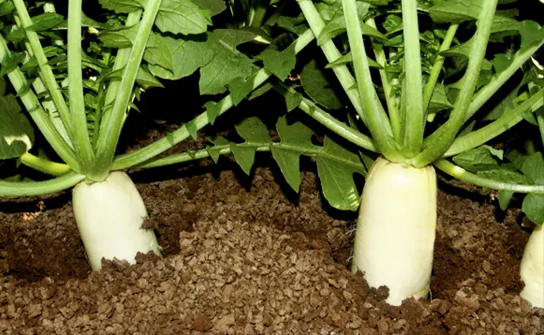 June-14-2023
June-14-2023
View: 6

The first step in cultivating Chinese lobok is selecting high-quality seeds. Farmers typically choose seeds that are disease-resistant, have good germination rates, and produce desirable radishes.
Chinese Lobok, also known as daikon, requires careful cultivation and attention to detail. This popular radish variety is widely cultivated in farms across China and other parts of the world. The process of growing Chinese lobok involves several steps, from seed selection to harvest, with specific considerations for optimal growth and quality.
The first step in cultivating Chinese lobok is selecting high-quality seeds. Farmers typically choose seeds that are disease-resistant, have good germination rates, and produce desirable radishes. These seeds are then sown in well-prepared soil during the appropriate season, which is typically spring or fall, depending on the climate.
Once the seeds are sown, it is essential to provide the right growing conditions for the Chinese lobok. Adequate sunlight, water, and nutrients are crucial for its healthy development. Farmers ensure that the soil is consistently moist, as dry conditions can cause stunted growth and affect the quality of the radishes. Regular watering is necessary, especially during dry spells.
Farmers also pay attention to weed control during the growing process. Weeds can compete with the Chinese lobok for nutrients and space, so regular weeding is necessary to prevent their growth. Some farmers use mulch or plastic covers to suppress weed growth and maintain soil moisture.
As the Chinese lobok plants grow, they require regular monitoring for any signs of pests or diseases. Common pests that can affect lobok include aphids, flea beetles, and root maggots. Farmers may employ integrated pest management techniques, using organic or chemical-based treatments when necessary to prevent damage and ensure healthy growth.
As the lobok reaches maturity, which usually takes around 60-70 days, the radishes are ready for harvest. The size and shape of the radish depend on the specific variety being cultivated. Farmers carefully dig out the radishes from the soil, taking care not to damage them during the process.
Once harvested, Chinese lobok radishes can be stored in cool, dry conditions to prolong their shelf life. They are often consumed fresh in various culinary dishes or pickled for longer-term storage. Some farmers may also choose to sell their harvest directly to markets or distribute them to local grocery stores and restaurants.
In conclusion, growing Chinese lobok requires selecting quality seeds, providing adequate sunlight, water, and nutrients, controlling weeds and pests, and monitoring the plants' progress until harvest. By following these steps, farmers can cultivate healthy and flavorful Chinese lobok radishes for consumption and distribution.
#Daikon #Radish #Lobok #Squash